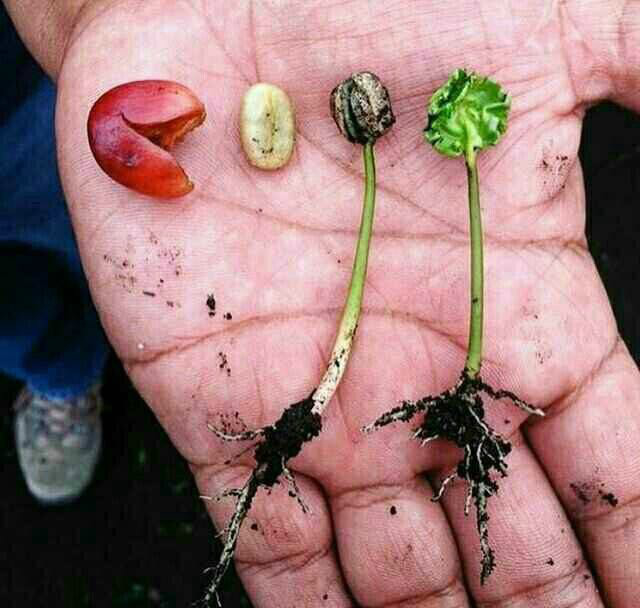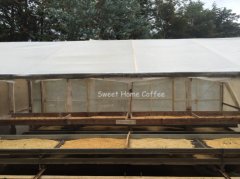Coffee Variety Information | Arabica Coffee Bean Variety introduction Arabica Coffee Variety introduction
Coffee tree is a flowering plant of the genus Coffea of Rubiaceae. At present, there are about 120 species, ranging from small shrubs to 18-meter-tall trees. Wild coffee species grow irregularly in the tropics, and new species are still being discovered. Strictly speaking, only two major species of coffee are cultivated to produce coffee: Arabica coffee (Arabica) and Canifra coffee (English Canephora, often referred to as "Robusta coffee"). However, in order to meet the needs of domestic coffee consumption, a third species, Liberian coffee, has been planted in a small number of countries such as the Philippines.
Introduction of Arabica Coffee varieties
Typica
Tibica
Tibica is the original species of all Arabica varieties. It is said that Tibika originated in southern Sudan, flourished in Ethiopia and was finally planted in Yemen for commercial production around the 7th century AD. Tibica was brought to the East Indies by the Dutch and was the first coffee variety to come to the West Indies, where Gabriel de Klee was planted in French Martinique in 1720.
The ripe fruit of Tibica is red. The yield of this variety is relatively low and its disease resistance is extremely poor, but its excellent cup test quality still makes it popular all over the world.
Bourbon
Bourbon
Bourbon is the product of a genetic mutation of the original Tybika species on the island of Reunion, and it is also the patrilineal and even paternal variety of many popular Latin American coffee varieties, including Kaddura, Kaduai, Pacas, New World, etc. Bourbon is still popular in Latin America today, crossing the ocean to Africa and taking root in Rwanda and Burundi. The ripe fruits of bourbon are mostly red, and there are also yellow or orange varieties. The output of bourbon is about 20% to 30% higher than that of Tibica; although the flavor is slightly sweeter and sometimes more balanced, the two varieties of coffee are generally very similar.
Catimor
Katim.
Katim is a hybrid of Kaddura and Timor-don't be confused with Kaddura and Kaduai. This highly resistant plant has the ability to resist coffee leaf rust, so it was widely planted in Latin American countries in the 1980s. Unfortunately, because the Timorese species (also known as the Alabasta species) is the product of a natural cross between the Tibica Arabica species and the Robusta species, although the latter can give it disease resistance, the delicate taste of the Arabica varieties has disappeared.
Catuai
Kaduai
Brazil bred Kaduai in the 1950s, which is a hybrid of Kaddura and the New World, with strong disease resistance and high yield. Like Kaddura, Kaduai's ripe fruit is naturally divided into red and yellow (I personally prefer the former). Kaduai is famous for its acidity and is common in most Central American countries.
Caturra
Kaddura
In the 1930s, a Bourbon gene mutation was found near the Brazilian city of Kadura, and it was named Kaddura. Kaddura's yield is high, and compact plants are easy to pick, but if planted at lower elevations, this characteristic becomes its own worst enemy-coffee becomes quite light here, so the weight of the fruit itself can crush the plant. If planted in a high altitude environment (more than 1200 meters), Kaddura's coffee quality and yield can be better guaranteed. Kaddura is a common variety of Central American coffee belts.
Geisha
Rose summer
Rosa, with slightly slender fruits and leaves, is a genetic mutant of Tibika and is said to have originated in the small town of Rosa in southwestern Ethiopia. Rose seeds were shipped to Tanzania in the 1930s and to Costa Rica in the 1950s. These two countries are the only important growers of Rosa outside Panama-although Panama is the best spokesman for Rosa.
In the high-altitude growing areas of Panama, Rosa proved to the world that it is an undisputed variety of coffee with tropical flavor, citrus and tea. Good coffee is loved by everyone, and I sincerely hope that Rosa can go to other countries.
Mundo novo
Mondonovo
New World (also known as Mondonovo) is a hybrid of Bourbon and Tibica, which first appeared in the 1940s and is still widely welcomed by Latin American coffee producers today. Its disease resistance and yield are better than bourbon and Tibika, but at the cost of insufficient flavor complexity.
Maragogype
Marago Gippe
Marago Gippe, thought to be a natural genetic mutant of Tibika, was first found near Marago Zeppe (just one word short) in the Bahia region of Brazil. Marago Gippe is a well-known large coffee bean and a patrilineal variety of Pacamara.
Pacamara
Pacamara
The Pacamara, bred by El Salvador in the late 1950s, is a hybrid of Pacas and Marago Gippe and is now in high demand. Similar to Maragogippe, it is large-usually twice the size of standard bourbon beans-but produces mediocre yields. Pacamara is widely praised for its clean acidity and fresh scent of flowers, and the higher the altitude, the more advantageous it is to plant it.
Pacas
Pacas
Pacas, a natural genetic mutant of bourbon, was discovered in El Salvador in 1949. Its compact plant can withstand relatively low altitude conditions, so people use it to cross with the opposite Malaggippe.
Bourbon Pointu
Tex.
The Salvadoran Coffee Institute (ISIC) began artificial breeding of bourbon plants in 1949. After 28 years of unremitting efforts, it finally bred a short Tex species in 1977, also known as the "improved version of bourbon". Although the yield of Tex is relatively low, the long breeding process makes its complex flavor very attractive and its taste quite full. Farmers in El Salvador, Honduras and Guatemala admire this variety and try to use it to improve the quality of their coffee.
Villa Sarchi
Vera Saatchi
The dwarf plant is a bourbon gene mutant, first discovered by Costa Rica in the city of Salch. Its branches and trunks form a steep angle, and among the ordinary green leaves, its leaves are very interesting bronze. Vera Saatchi tastes very fruity. In addition, its yield is very high, disease resistance is also justified.

Important Notice :
前街咖啡 FrontStreet Coffee has moved to new addredd:
FrontStreet Coffee Address: 315,Donghua East Road,GuangZhou
Tel:020 38364473
- Prev

Ethiopia-description of coffee flavor and flavor of ARICHA 90.75min in the sun
For the exchange of professional baristas, please follow the coffee workshop (Wechat official account cafe_style) ■ country: Ethiopia ■ Manor: ARICHA ■ producing area: Ethiopia ■ varieties: Ethiopian native species ■ treatment: sun ■ harvest time: 2016 arrival cup test report: Aricha this is the name of a processing plant, located in Yega Sheffei, many coffee sold in the market will be A
- Next

How to choose raw beans? 10 factors to consider when choosing raw coffee beans
The raw bean seller is mainly responsible for grading the coffee beans before selling them to the coffee bean merchant. After the grading is completed, premium coffee beans and boutique coffee beans will be selected, although they will have some defects but do not affect the coffee rating. These defects are not so serious, but they can also cause potential damage to the quality of coffee. Although Cupping is undoubtedly the most definite way to check coffee beans.
Related
- Detailed explanation of Jadeite planting Land in Panamanian Jadeite Manor introduction to the grading system of Jadeite competitive bidding, Red bid, Green bid and Rose Summer
- Story of Coffee planting in Brenka region of Costa Rica Stonehenge Manor anaerobic heavy honey treatment of flavor mouth
- What's on the barrel of Blue Mountain Coffee beans?
- Can American coffee also pull flowers? How to use hot American style to pull out a good-looking pattern?
- Can you make a cold extract with coffee beans? What is the right proportion for cold-extracted coffee formula?
- Indonesian PWN Gold Mandrine Coffee Origin Features Flavor How to Chong? Mandolin coffee is American.
- A brief introduction to the flavor characteristics of Brazilian yellow bourbon coffee beans
- What is the effect of different water quality on the flavor of cold-extracted coffee? What kind of water is best for brewing coffee?
- Why do you think of Rose Summer whenever you mention Panamanian coffee?
- Introduction to the characteristics of authentic blue mountain coffee bean producing areas? What is the CIB Coffee Authority in Jamaica?

